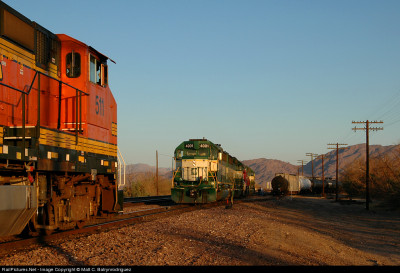Oil By Rail: Nine Things California Can Do to Increase Safety
While FRA Considers New Federal Regulations, States Can Ramp Up Prevention and Emergency Response
 At a joint Senate and Assembly hearing last week on oil by rail safety in California, some lawmakers expressed frustration at slow federal action, and asked what California can do to increase public safety. My testimony focused on federal preemption issues, defining areas where the state can regulate, and those where it is preempted by the Commerce Clause, Federal Railroad Safety Act (FRSA), or ICC Termination Act, or all three.
At a joint Senate and Assembly hearing last week on oil by rail safety in California, some lawmakers expressed frustration at slow federal action, and asked what California can do to increase public safety. My testimony focused on federal preemption issues, defining areas where the state can regulate, and those where it is preempted by the Commerce Clause, Federal Railroad Safety Act (FRSA), or ICC Termination Act, or all three.
While the Department of Transportation (DOT) and Federal Railroad Administration (FRA) have primary authority over railroad safety and transportation, the California Public Utilities Commission (CPUC) shares authority with the federal government to enforce federal rail safety requirements and conduct inspections. And even with strong federal preemption provisions, there are actions that California and other states can take right now to increase public safety in light of the enormous growth of oil by rail.
Here are nine things the state can do:
1. Prioritize track and rail car inspection.
California has more than 5,000 miles of mainline railroad track. Inspection of track and rail cars is vital, as derailments are the most common type of train accident in the United States. A national analysis of freight train derailments from 2001 to 2010 on the Class I freight railroads’ mainline track found that broken track rails or track welds were the leading cause of derailments. Broken rail car wheels and track obstructions are also common causes of derailments. (Liu, et. al. 2012).
Governor Brown’s new budget includes funding to hire seven additional rail safety inspectors for the CPUC, paid for by rail industry assessments. The state should ensure that it has enough CPUC inspectors to accommodate the projected rise in oil by rail traffic each year. If seven new inspectors are needed right now; we will likely need many more by 2016, when oil by rail shipments are projected to increase as much as 25-fold, to 150 million barrels per year.
2. Obtain robust data on rail routing, rail car contents, and accident causes.
California agencies need more information from FRA and the railroads on routes, frequency, and rail car contents, as well as data on train derailments, their causes, and risk factors specific to crude by rail transit. The state should obtain this data from FRA – a recommendation echoed in the June 10, 2014 California Inter-Agency Working Group Report. The CPUC needs both national data and California-specific data in order to do its job.
3. Conduct an analysis of the risks that crude by rail poses to the state, including identification of high-risk areas of track, and propose specific measures to increase safety.
The legislature should consider requiring an annual report from the CPUC on the specific risks that crude by rail poses to the state, and measures that it can take to increase safety. Voluntary agreements with the railroads may also be an important outgrowth of this state-specific analysis that can inform where and how to direct limited state resources. As previewed above, this state analysis should be guided by the most recent data available from FRA and the railroads.
The legislature could also consider requiring information sharing among the relevant state agencies, including CPUC, Office of Emergency Services (OES), Office of Spill Prevention and Response (OSPR), California Environmental Protection Agency, and more.
4. Require state oil spill contingency plans for trains transporting oil into the state.
SB 1319 (Pavley) would require state oil spill contingency plans for trains transporting oil into the state. Such a state-mandated plan would provide an opportunity to secure better emergency response protection for the environment and public safety.
5. Get access to daily information on oil shipments into California, and ensure that state and local emergency personnel can access this information immediately in the event of an accident.
A recent DOT Emergency Order requires that each railroad operating trains containing more than 1 million gallons of Bakken crude oil, or approximately 35 tank cars, to provide states with weekly notice that includes estimated volumes of Bakken oil transported per week and routing information.
The state should also have immediate access to real-time shipment information, assuming the technology exists to enable this. The state should also ensure that local emergency response personnel are well trained to deal with any crude by rail accident, and can readily identify the contents of any shipment. Training and information sharing with local emergency response personnel can be paid for by the industry, using a fee or assessment like the 6.5 cent/barrel fee on all oil imports recently approved by the state.
6. Advocate for more stringent federal safety regulations.
Legislative pronouncements, as well as the CPUC’s robust participation in the Rail Safety Advisory Committee (RSAC) are needed to secure better federal standards.
California joins others states such as New York in advocating for more stringent rail car design standards (phasing out DOT-111 cars, for example), mandatory placards on rail cars identifying Bakken crude oil, expediting Positive Train Control, and requiring electronically-controlled pneumatic brakes on all crude oil trains. The state can also advocate for further federal analysis of possible routing changes, to avoid sensitive population and habitat areas.
7. Monitor compliance with new voluntary measures that the railroads agreed to implement this year.
As part of a February 2014 agreement with DOT, the Class I railroads will perform one additional internal-rail inspection each year than required by the FRA on routes over which trains carry 20 or more tank cars of crude oil, and will conduct at least two track geometry inspections over these routes. The railroads also agreed to use end-of-train braking systems on all oil trains, and lower train speed in federally-designated “high-threat-urban-areas.”
The CPUC should monitor the railroads’ compliance with these voluntary measures. At the same time, CPUC and the state should advocate for making these voluntary measures mandatory, by issuing new or revised FRA regulations.
8. Consider issuing guidance to local permitting agencies on requirements for offloading facilities and oil refinery expansion.
There are currently at least five crude-by-rail refinery projects being pursued in California: one in Pittsburg, one in Benicia, two in Bakersfield, and one in Wilmington. There is a patchwork of local permitting agencies responsible for land use, air, water, and other local safety and environmental issues that may be relevant to offloading sites and refineries.
Local government and permitting agencies can deny land use and other permits for refineries and offloading facilities if they find safety risks or improper environmental mitigation under statutes like the California Environmental Quality Act (CEQA). But, local agency personnel may have varying levels of expertise in oil and rail issues and may apply permitting criteria inconsistently. As such, the state, through the Office or Planning and Research (OPR), should consider issuing guidance to local permitting agencies on necessary permits and requirements for offloading facility or refinery expansion.
9. Provide guidance on CEQA review and the public comment and participation process, especially relevant to environmental justice communities that may be located near offloading sites or refineries.
While rail accidents can happen anywhere, communities near offloading sites and refineries are especially vulnerable to oil by rail transport risks. The state can provide information and guidance to these communities on opportunities for engagement, comment and participation.
In addition, the state can encourage railroads, industry and refineries to work directly with potentially affected communities to disclose as much information as possible about shipments, safety measures, and how community members can participate in the process to make their communities safer.






Reader Comments